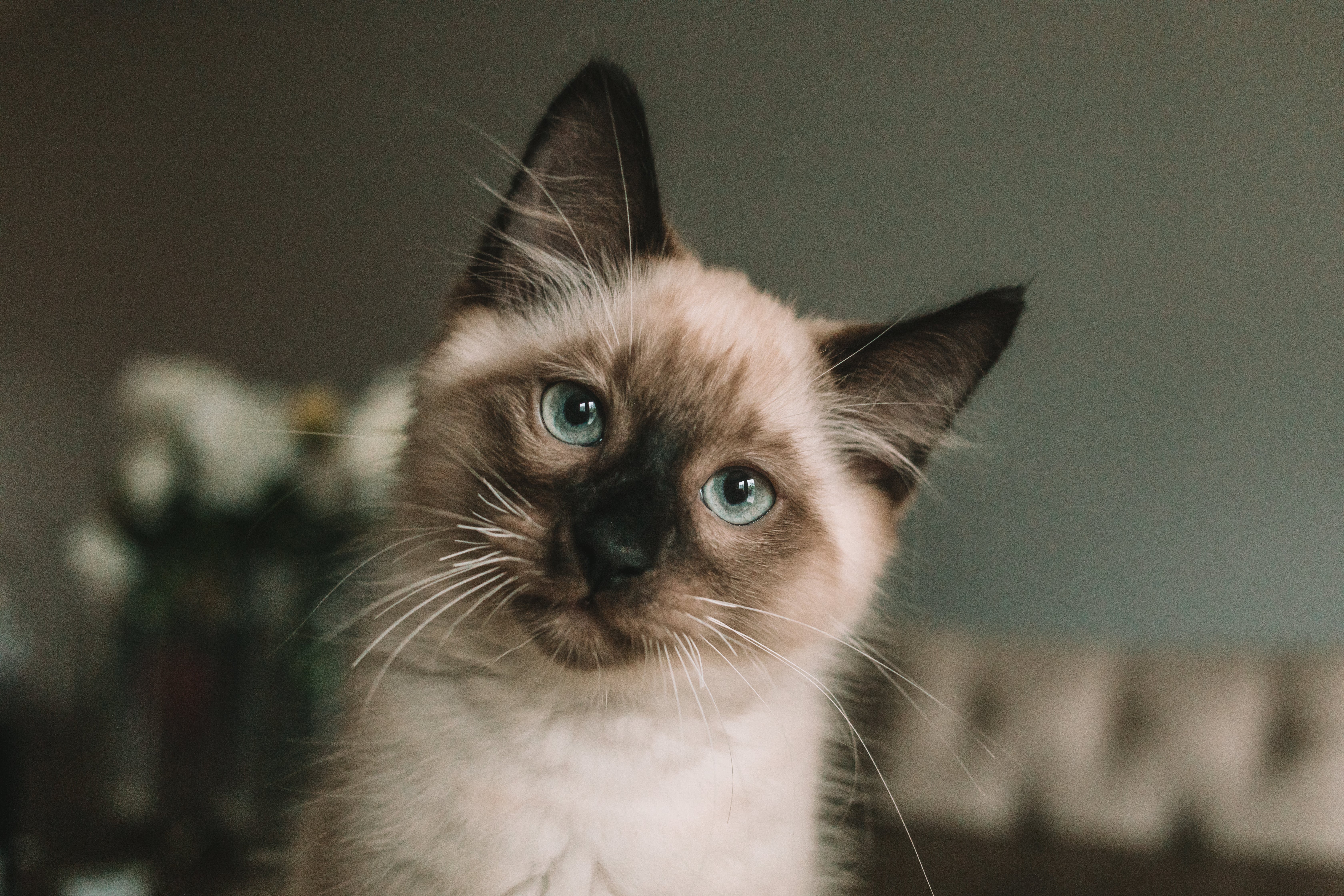Breed characteristics carousel
Learn More
Need to Know
- Great for first-time cat owners
- Enjoys playing games and is active at home
- Highly active and inquisitive cat
- Sociable and dependent cat
- Slightly talkative cat
- Average build cat breed
- Requires frequent grooming
- A bit of both indoor and outdoor space
- Great family cat
- Can be left alone all day
- Great for a relaxed home

Personality
Loving, gentle, and supremely playful, Birman cats are faithful companion cats that love to shadow their owners. They adore being adored, perhaps thanks to a long history as a temple cat in Burma (Myanmar). Intelligent and people-oriented, they are curious around strangers. They are generally easy cats to care for.
There is a legend that white cats lived in the Buddhist temples of Burma (Myanmar) and held the spirits of priests. Their unique coloring was said to stem from an incident when a beloved temple cat sacrificed itself to save its human companion. While that might not be provable, the breed’s documented history started in France in the early 20th century. The breed nearly vanished during World War II but it was later revived. The first Birman cats came to the U.S. in the 1950s.
The ideal Birman cat breed owner will have plenty of time to devote to playing with their cat. They can do well in homes where children understand cat boundaries and respect them.
Birman cats love playing. The more playtime you offer, the more exhausted their minds will be—and perhaps the less they will follow you around the house, “helping” out. Food dispensing toys are helpful.
The Birman cat breed will love a secure outdoor enclosure or “catio” if one is available. They are mostly indoor cats who love patrolling the house. They do not do well in the outdoors and can be considered a theft risk given their striking appearance and laid-back attitude.
Birman cats have long and silky coats that do well with a comb and brush frequently. They love attention from their owners, and grooming counts as quality bonding time.
Birmans are playful cats and will want to “supervise” what their owners are doing. They might even commandeer your desk or countertop, so some training can be useful. The more opportunities for play to tire their minds, the better.
Cats have boundaries, and the Birman is no exception. Children who can respect those boundaries and follow rules around the cats will cohabitate well with them.
The cost of a Birman from a breeder is significantly more than the cost of adopting one from a local shelter or rescue. The adoption fee usually covers additional items such as spaying or neutering, vaccines, and microchipping.

Learn more about feeding and caring for your Birman on Purina.
Did You Know?
- Birman cats are thought to be descended from ancient Burma (Myanmar).
- They are born all white and then develop their signature coats.
- Birman cats have white “gloved” paws, no matter what coat color they have.

